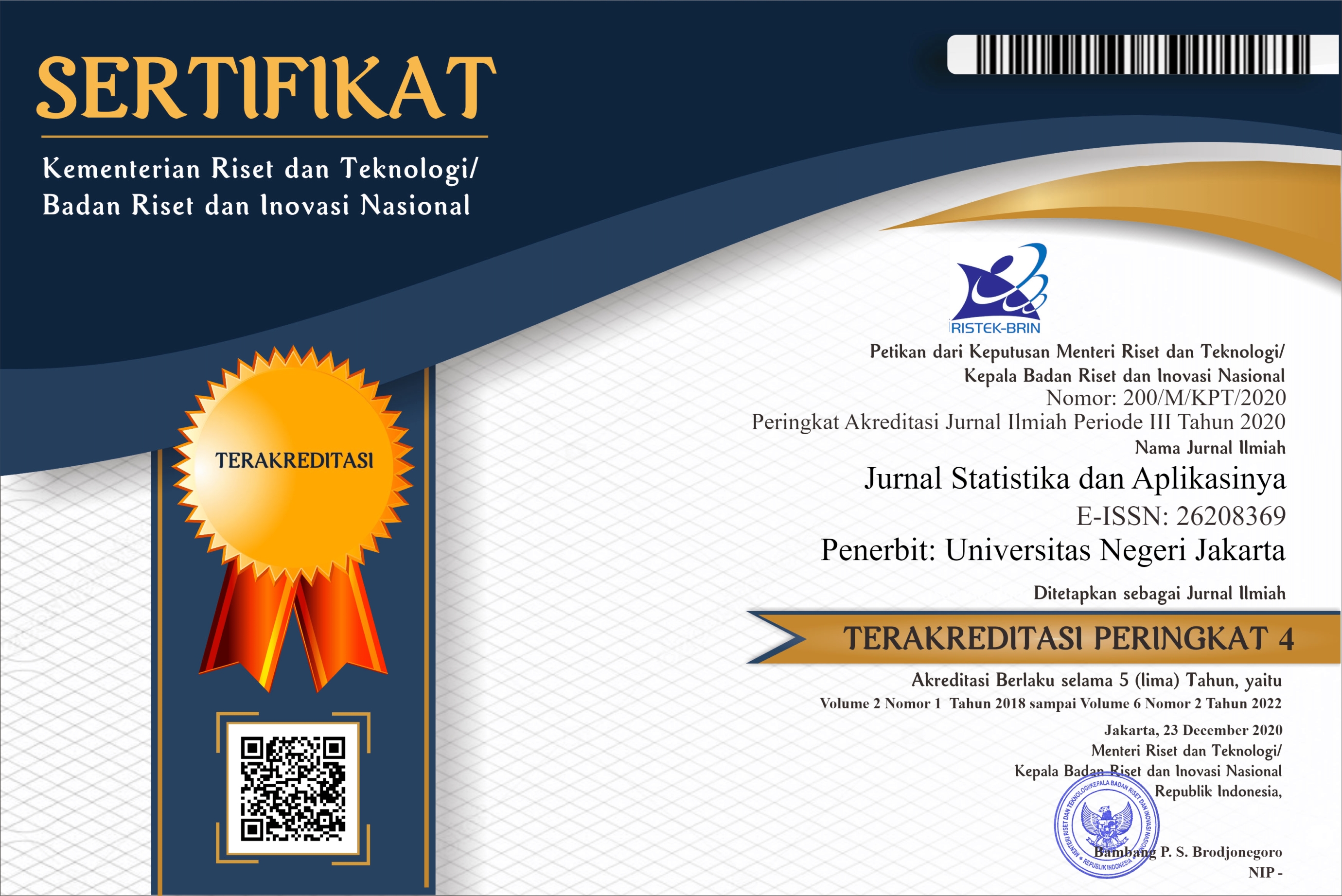Application of Geographically Weighted Regression for Modeling the Poverty Cases in Kalimantan, Indonesia
DOI:
https://doi.org/10.21009/JSA.08101Keywords:
Geographically Weighted Regression, poverty, Kalimantan, IndonesiaAbstract
Poverty is one of the most global issues that remains a concern worldwide, including in Indonesia. Indonesia is among the top 100 poorest countries in the world, ranked 73rd, to be exact. Government wants to decrease the national poverty rate, as outlined in the 2021-2024 National Medium-Term Development Plan, with the expected percentage of poor people in Indonesia on 2024 being 6.5 to 7 percent. Unfortunately, the hope for a reduction in the poverty rate has not been achieved in several regions, such as in 4 out of 5 provinces in Kalimantan. Therefore, the analyzing factors causing poverty in the Kalimantan region is conducted using the Geographically Weighted Regression method in order to give clearly information for government to decrease the poor rate in this region. GWR (Geographically Weighted Regression) is an extension of the regression method. The equation parameters for each observation location differ from one location to another. The weighting function used were fixed gaussian, fixed bisquare, fixed tricube, adaptive gaussian, adaptive bisquare, and adaptive tricube. Based on R2 and AIC value, the best model is the model with fixed tricube function. The R2 score is 0.8952, while the AIC score is 155.83. The GWR model is better than OLS or global regression model. Thus, spatial analysis to see the factors affecting the percentage of poor people in each regency and city in Kalimantan, Indonesia has been successfully carried out.






